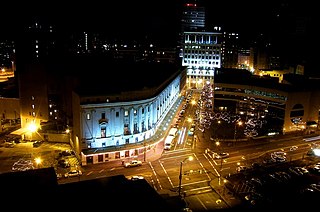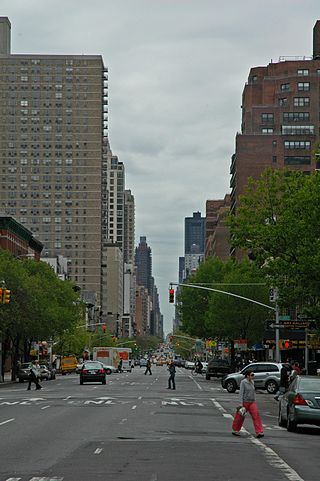
The American Federation of Musicians of the United States and Canada (AFM/AFofM) is a 501(c)(5) labor union representing professional instrumental musicians in the United States and Canada. The AFM, which has its headquarters in New York City, is led by president Raymond M. Hair Jr. Founded in Cincinnati in 1896 as the successor to the National League of Musicians, the AFM is the largest organization in the world to represent professional musicians. It negotiates fair agreements, protects ownership of recorded music, secures benefits such as healthcare and pension, and lobbies legislators. In the U.S., it is known as the American Federation of Musicians (AFM), and in Canada, it is known as the Canadian Federation of Musicians/Fédération Canadienne des Musiciens (CFM/FCM). The AFM is affiliated with AFL–CIO, the largest federation of unions in the United States and the Canadian Labour Congress, the federation of unions in Canada.

Claude Thornhill was an American pianist, arranger, composer, and bandleader. He composed the jazz and pop standards "Snowfall" and "I Wish I Had You".

The Eastman School of Music is the music school of the University of Rochester, a private research university in Rochester, New York. It was established in 1921 by industrialist and philanthropist George Eastman.

The New England Conservatory of Music (NEC) is a private music school in Boston, Massachusetts. It is the oldest continuously operating independent music conservatory in the United States and among the most prestigious in the world. The conservatory is located on Huntington Avenue along the Avenue of the Arts near Boston Symphony Hall, and is home to approximately 750 students pursuing undergraduate and graduate studies, and 1,500 more in its Preparatory School and School of Continuing Education. NEC offers bachelor's degrees in instrumental and vocal classical music performance, contemporary musical arts, composition, jazz studies, music history, and music theory, as well as graduate degrees in collaborative piano, conducting, and musicology. The conservatory has also partnered with Harvard University and Tufts University to create joint double-degree, five-year programs and provide students access to Boston's premier academic resources.
The music of Baltimore, the largest city in Maryland, can be documented as far back as 1784, and the city has become a regional center for Western classical music and jazz. Early Baltimore was home to popular opera and musical theatre, and an important part of the music of Maryland, while the city also hosted several major music publishing firms until well into the 19th century, when Baltimore also saw the rise of native musical instrument manufacturing, specifically pianos and woodwind instruments. African American music existed in Baltimore during the colonial era, and the city was home to vibrant black musical life by the 1860s. Baltimore's African American heritage to the start of the 20th century included ragtime and gospel music. By the end of that century, Baltimore jazz had become a well-recognized scene among jazz fans, and produced a number of local performers to gain national reputations. The city was a major stop on the African American East Coast touring circuit, and it remains a popular regional draw for live performances. Baltimore has produced a wide range of modern rock, punk and metal bands and several indie labels catering to a variety of audiences.

Henry Lee Higginson was an American businessman best known as the founder of the Boston Symphony Orchestra and a patron of Harvard University.

The 5th Avenue Theatre is a landmark theatre located in Seattle's Skinner Building, in the U.S. state of Washington. It has hosted a variety of theatre productions and motion pictures since it opened in 1926. The building and land are owned by the University of Washington and were once part of the original campus. The theatre operates as a venue for nationally touring Broadway and original shows by the non-profit 5th Avenue Theatre Association.
The culture of St. Louis, Missouri includes a variety of attractions located within the city of St. Louis, Missouri, and in surrounding communities in Greater St. Louis, such as local museums, attractions, music, performing arts venues, and places of worship.
The Center Theatre was a theater located at 1230 Sixth Avenue, the southeast corner of West 49th Street in Rockefeller Center in New York City. Seating 3,500, it was originally designed as a movie palace in 1932 and later achieved fame as a showcase for live musical ice-skating spectacles. It was demolished in 1954, the only building in the original Rockefeller Center complex to have been torn down.

The Hippodrome Theatre, also called the New York Hippodrome, was a theater in New York City from 1905 to 1939, located on Sixth Avenue between West 43rd and West 44th Streets in the Theater District of Midtown Manhattan. It was called the world's largest theatre by its builders and had a seating capacity of 5,300, with a 100x200ft (30x61m) stage. The theatre had state-of-the-art theatrical technology, including a rising glass water tank.

Heinz Hall is a performing arts center and concert hall located at 600 Penn Avenue in the Cultural District of Pittsburgh, Pennsylvania. Home to the Pittsburgh Symphony Orchestra (PSO) and the Pittsburgh Youth Symphony Orchestra, the 2,676 seat hall presents about 200 performances each year. Originally built in 1927 as Loew's Penn Theatre, the former movie palace was renovated and reopened as Heinz Hall in 1971.

85th Street is a westbound-running street, running from East End Avenue to Riverside Drive in the borough of Manhattan in New York City.
The 2003 Broadway musicians strike was a strike by the Associated Musicians of Greater New York, American Federation of Musicians Local 802 union members, and other Broadway unions such as Actors' Equity Association and International Alliance of Theatrical Stage Employees. The strike lasted from Friday, March 7, 2003, to early Tuesday morning, March 11, 2003.

Thomas Jefferson High School, usually referred to as Jefferson High School, is a public high school in the Los Angeles Unified School District. Founded in 1916, it is the fourth oldest high school in the school district. Located in South Los Angeles, its surrounding communities are Downtown, Central-Alameda, Florence, Historic South-Central and South Park. Jefferson's school colors are kelly green and gold and the sports teams are called the Democrats, or Demos for short. In 2006, a pilot program called New Tech: Student Empowerment Academy began in the northeast portion of the school. New Tech has since become a separate charter school housed in the Jefferson building. In 2016 New Tech closed down and the available space is now used by Nava College Preparatory Academy a pilot school that was established in 2014.
The performing arts in Detroit include orchestra, live music, and theater, with more than a dozen performing arts venues. The stages and old time film palaces are generally located along Woodward Avenue, the city's central thoroughfare, in the Downtown, Midtown, and New Center areas. Some additional venues are located in neighborhood areas of the city. Many of the city's significant historic theaters have been revitalized.

The Yiddish Theatre District, also called the Jewish Rialto and the Yiddish Realto, was the center of New York City's Yiddish theatre scene in the early 20th century. It was located primarily on Second Avenue, though it extended to Avenue B, between Houston Street and East 14th Street in the East Village in Manhattan. The District hosted performances in Yiddish of Jewish, Shakespearean, classic, and original plays, comedies, operettas, and dramas, as well as vaudeville, burlesque, and musical shows.

Frank Thurmond Fairfax was the organizer of Philadelphia's Protective Union Local 274 (1935–1971), a charter of the American Federation of Musicians (AFM/AFofM) for black musicians. Fairfax was also a bandleader, musician, music arranger and songwriter, performing in Philadelphia and other northeastern cities.

Walter F. Craig was a violin soloist and orchestra director in New York City. His career started in 1870 and continued until the 1930s. He was known for his performance and interpretation of classical music, but he also was popular performing at dances.

The Philam Life Theater, also styled Philamlife Theater, was a performing arts venue at 1440 United Nations Avenue in the Ermita district of Manila, the Philippines. It opened in 1961 as the Philam Life Auditorium and was designed by Filipino architect Carlos Arguelles as part of the corporate headquarters for the Philam Life insurance company. The International Style concert hall in the eastern annex of the Philam Life Building is known for its superior acoustics and elegant interior. It served as Manila's cultural center for almost a decade and has played host to world-renowned musicians, choirs and symphony orchestras over its 53-year history, including Renata Tebaldi, Franco Corelli, Marian Anderson, Pinchas Zukerman and Cecile Licad. The theater also served as the home of the Manila Symphony Orchestra, the Manila Philharmonic Orchestra and the Philippine Educational Theater Association.

The Wieting Opera House was a performance hall in Syracuse, New York, that hosted operas, films, and other performances from 1852 to 1930. Initially built by John Wieting in 1852 as Wieting Hall, the building burnt down in 1856. He rebuilt it that year, and in 1870 renovated the hall into an opera house. Towards the end of the 19th century, the opera house was a major theater in the Eastern United States, and held test performances of shows that were bound for performance on Broadway in New York City. The opera house burnt down in 1881 and 1896, and was rebuilt both times, the second time by Wieting's wife, Mary Elizabeth Wieting. The opera house began showing movies in the early 20th century, and closed in 1930, when it was replaced with a parking garage.















